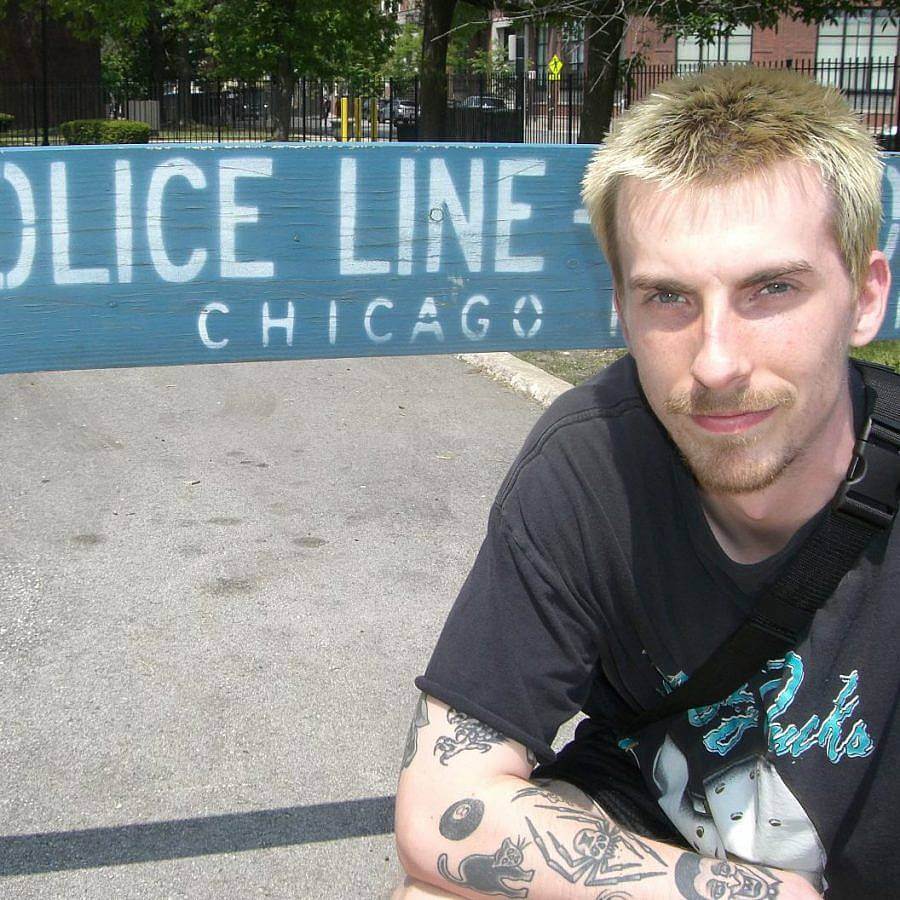Tell us a little bit about yourself and what you do.
I grew up in small town, Puyallup, WA, and currently live and work in Chicago. I primarily make collage paintings amongst other things. Aside from making art, I like hanging out with my cats, tattoos, listening to music, going for walks, movies, finding weird videos on the internet, and collecting vintage t-shirts.
What brought you to Chicago and how do you like living here?
I got my BFA at Central Washington University in 2019, while I was finishing my BFA I was accepted into the painting and drawing MFA program at SAIC. I moved here a couple months after I got my BFA and have been here since. Looking back, it was a bit of a culture shock. I didn’t have much access to museums or contemporary art besides through the internet, so it was like an overload in a way. It’s been 2 years since I got my MFA, I don’t have plans on being here forever, but it’s good for now. I’ve met a lot of awesome people since moving here, I’m proud of myself for going for it.
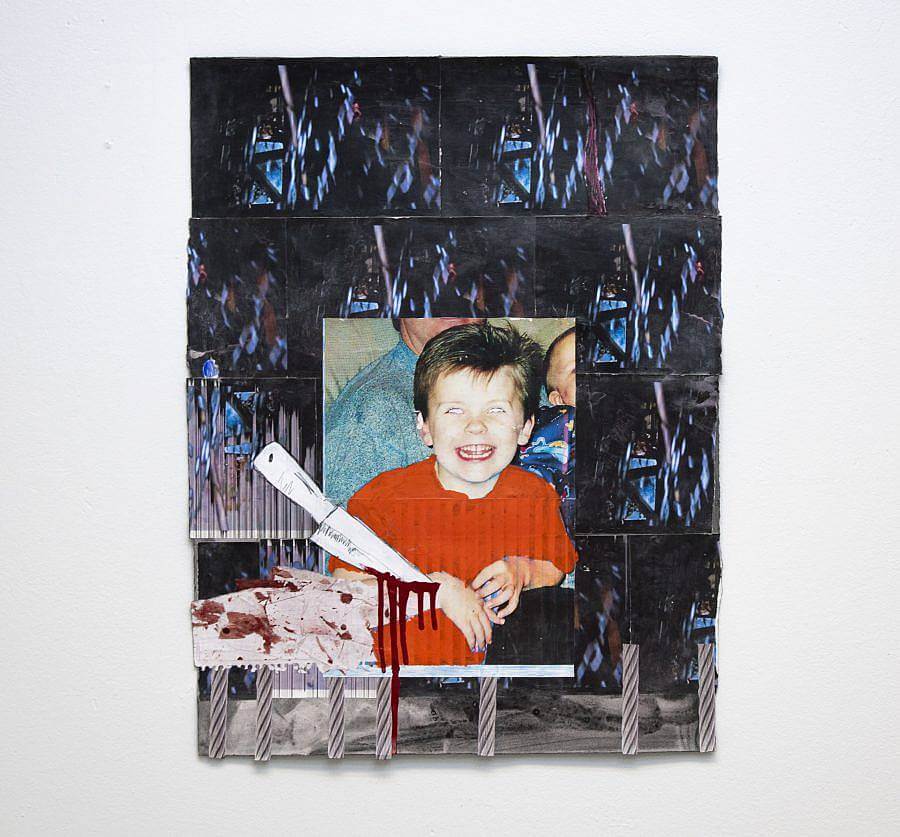
Individuals who are responsible for atrocities are a recurring theme in your works, what initially drew you to making work about figures like serial killers and mass shooters?
I was using a lot of images pulled from horror movies, specific characters, or more abstract ones. At the time, using those images felt a little scary, like I was headed into the deep end. Eventually, I got comfortable, and implementing images of serial killers and mass shooters began to enter my work and made me feel like I was in the deep end again. That’s where I like to be, if I don’t feel a little uncomfortable, or a little too vulnerable when I’m making things then I don’t think I’m doing the right thing. That could be material choices, who is in it, what is in it, etc. I don’t only use images of these people, but when I do it is often a way to display the amount of evil one can do when pushed too far. Or, when there is an ultimate systematic failure that contributes to these atrocities and their tendency to repeat again in the future. Collective trauma’s that continue to happen, leading to more fear and division, rather than unifying. In a way, they end up exposing the privilege that these figures have, in that they have reached some sort of stardom for their heinous acts, and victims have to suffer and continue to act out of good morals, although they are now damaged themselves. It’s a vicious cycle. I use these images occasionally, some of them more overt and abrasive than others, along with personal images, specific celebrities or movie/tv characters, and other images sourced from the internet. I like that one recognizable individual can make every other image raise the question “Who’s in this other painting then? What is that image? Where is that from? What the fuck is going on?”
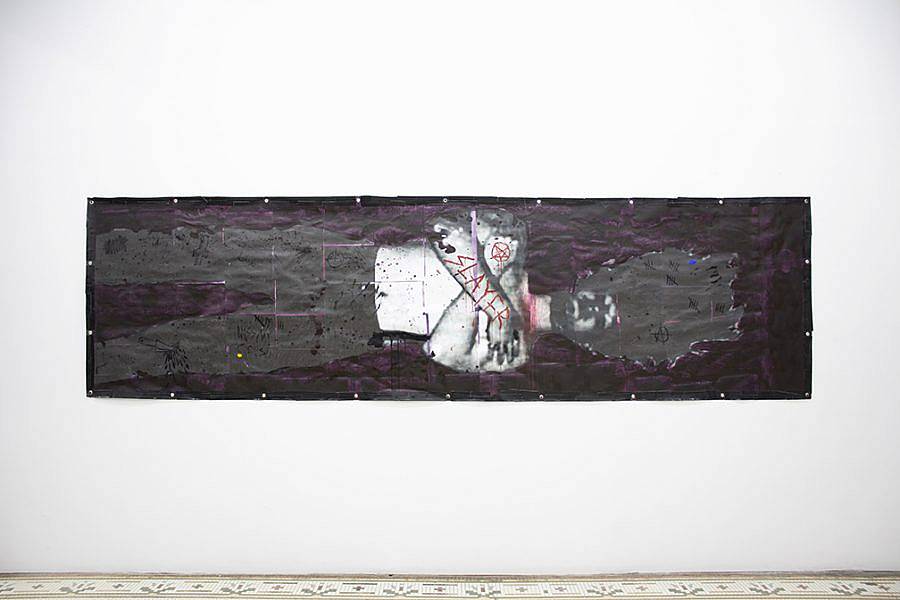
Who is currently inspiring you?
There’s some new works by Thomas Hirschhorn that I just found that I’m into, they are from this year. Honestly, I’ve been trying to not look at the work that has influenced me unless I get really stuck. It makes it easier to not care as much while I’m working. But, I would say my friends mainly, all of my friends make cool stuff and take risks, seeing them do well inspires me to push myself as well.
Can you talk a bit about the wearable items you have been releasing?
I’ve wanted to make some wearable things for a while but have never given it enough time to really think about it. I eventually thought of making the Ski Masks while things were slow in the studio. It turned into this whole conceptual project and I wanted to make something that people could use, or still treat as an art object. I wanted to make something that is more accessible than “fine art” or “painting.” The general idea of a mask is something that surfaces here and there in some of my work. I wanted these to be something that brings the owner of the mask out of themselves, it is a way to confront heavy or vulnerable things while remaining hidden.

Much of your work explores themes of violence, horror, and fear, how do you typically approach these topics and how do you feel your work addresses them?
I want viewers to confront and process their own thoughts, emotions, and experiences. By exploring the darker aspects of the human experience, I seek to expose the collective traumas that shape our lives, and to offer a path towards healing and understanding. I want my work invite us to look deeper, to see beyond the surface of our own lives, and to engage with the complexities of the world around us. I try not to worry about the implications of such “violence” because it’s impossible to make anything if you’re worried about that stuff. The world is a violent place. There are bad things that happen all the time, there is a stigma that if someone experiences something bad, they are more likely turn out “bad” themselves. “Bad” as in something that is actually bad, or something that is just bad based on the opinions or beliefs of others. My work allows me to not only process heavy things, it also allows me to reclaim power over the impact of these things and connect with the world. Oh also, my dreams, or I guess I should say nightmares inspire my work a lot. I’ve had really bad nightmares and night terrors for a long time.
Do you have a favorite scary movie?
Is this a trick question?
Jk. I think about Hereditary and The Shining a lot. I’d say those two are my favorites? They inspire me a lot. But, of course, I love all the classic horrors and slashers. I like Child’s Play and Nightmare on Elm Street a lot. Friday the 13th part 4. I also really like The Witch.
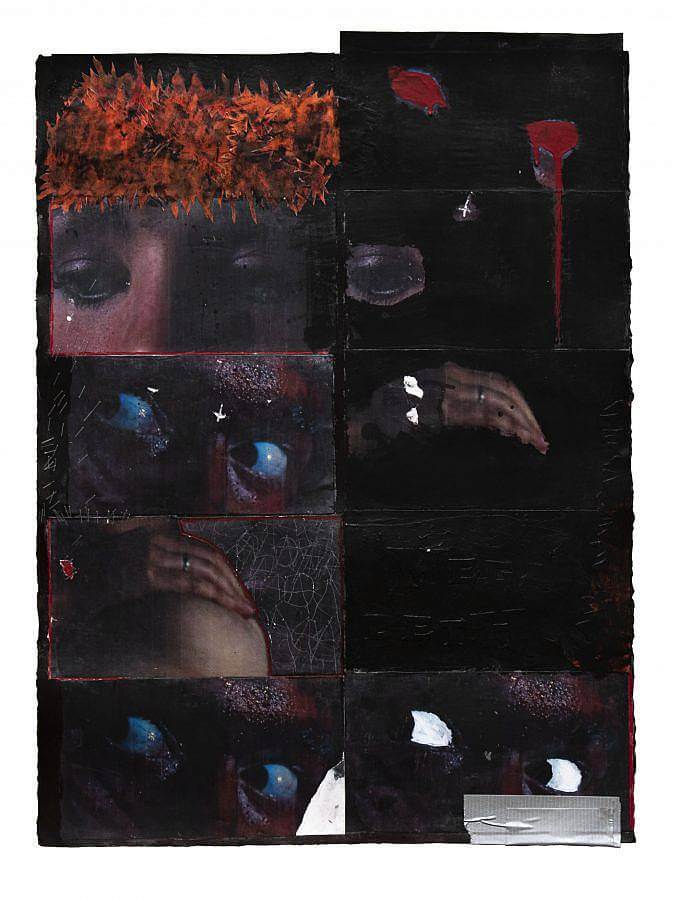
In what ways do you think that your work approaches camp?
I use horror tropes and shock in my work as a way to create a separation between me and the viewer. In a way, the moments of overt violence, aggression, or self-harm are ways to protect myself. They are so intense and over the top at times it rides that line. I started really focusing on this and leaning into these things about a year or so into my time in grad school, I think I really developed these moves to combat the toxic moral grandstanding and classist ways of critiquing work I came across during my time at SAIC. Growing up in a conservative environment, it was shocking that people who I thought would be more open-minded were not. Stuff like this continued after grad school of course, my Instagram got deleted, I had a piece removed from a show, very frustrating and discouraging at the time, but now I understand that’s exactly what was supposed to happen.
You recently began teaching painting through After School Matters, what insights have you gained from your experiences there?
It’s been great. I’m so grateful to be teaching there. The kids are so talented and brave. I really care about youth and think it is crucial to protect their creativity. I want to make sure that all of my students are confident in themselves and continue to feel free while making no matter what they end up doing. I try to provide an environment that is not like high school art class, and is more about why they make art, rather than just teaching them how to make it. I wish I had a teacher that made me feel seen and made me feel brave… Where I grew up is a lot different than Chicago, but that suppression really has an impact. Young people go through heavy things. Those things that we see as taboo are real. I don’t want anyone to feel like they can’t connect with the world through their art. There’s kids in my class who are making really powerful work. It’s awesome. They remind me of what I need to be doing.
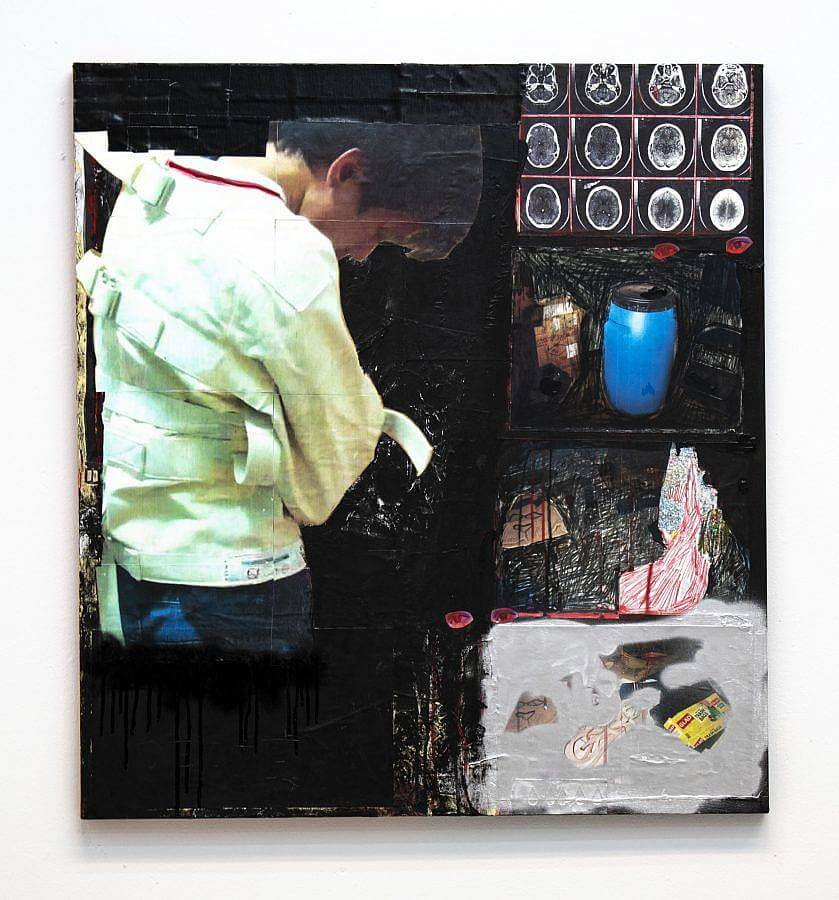
Thoughts on being a working-artist?
Shout out to all the people without wealth who are still making stuff after art school
Any upcoming projects that you can share?
I have a solo-exhibition at Spas Setun in Moscow coming up soon. It’ll be my first international solo-exhibition.
Interview conducted and edited by Sam Dybeck.
